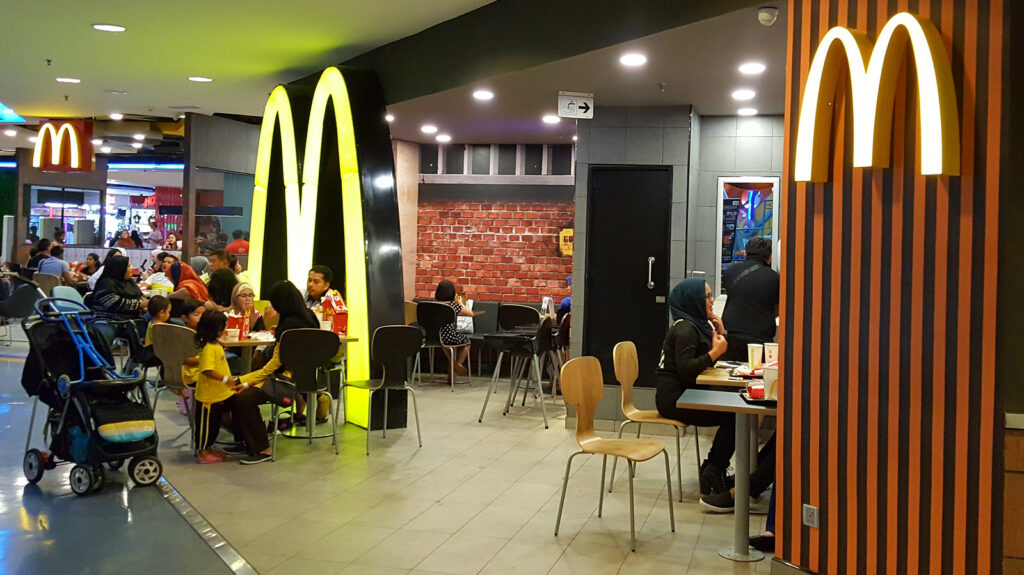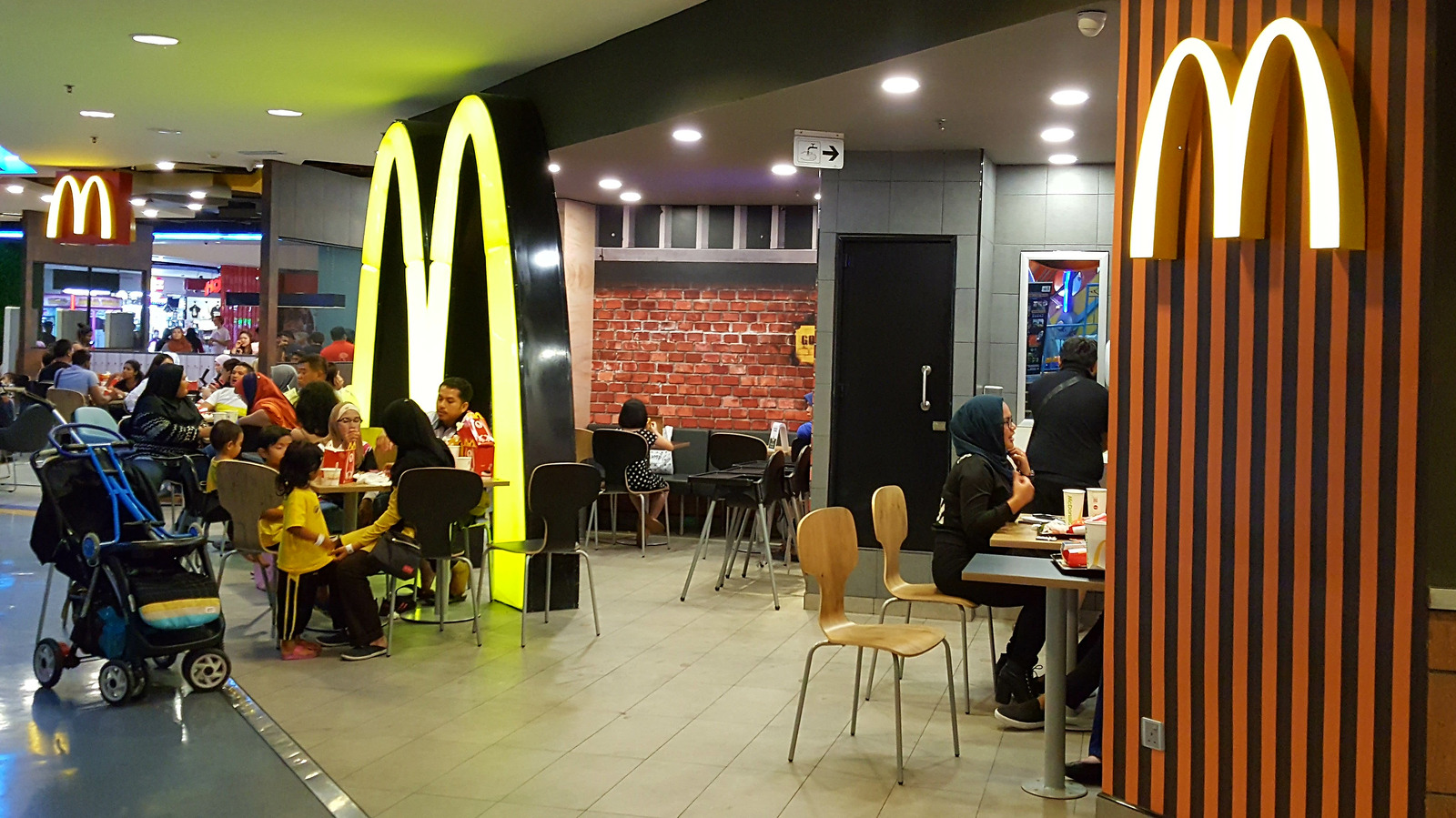
## Fast Food Restaurant: A Comprehensive Guide to the Industry & Your Choices
The world of fast food restaurants is a ubiquitous part of modern life. Whether you’re grabbing a quick bite on a lunch break, satisfying a late-night craving, or seeking an affordable family meal, fast food restaurants offer a readily available option. This comprehensive guide delves into the intricacies of the fast food restaurant industry, exploring its history, evolution, key players, nutritional considerations, and future trends. We aim to provide a balanced perspective, offering valuable insights for consumers and industry enthusiasts alike. Our analysis is based on years of observing the industry, talking to professionals, and analyzing consumer trends.
This article will provide the definitive resource on fast food restaurants. You’ll gain a deep understanding of the industry, learn how to navigate your choices, and understand the factors driving its evolution. We will cover everything from the history of the industry to the latest menu innovations.
## What Exactly is a Fast Food Restaurant?
Beyond the simple definition of a restaurant serving food quickly, a fast food restaurant encompasses a specific business model. It’s characterized by standardized menus, efficient preparation processes, and a focus on speed and affordability. The term itself has evolved over time, reflecting changes in consumer preferences and technological advancements. Historically, fast food emphasized burgers and fries, but the modern landscape includes diverse cuisines and healthier options.
The core concept behind a fast food restaurant lies in operational efficiency and consistency. Standardized recipes, pre-portioned ingredients, and streamlined assembly lines allow for rapid order fulfillment. This efficiency translates to lower prices for consumers and higher profit margins for operators. However, this focus on speed and cost-effectiveness can sometimes come at the expense of nutritional value and ingredient quality.
Recent studies indicate a growing demand for healthier and more sustainable fast food options. Consumers are increasingly aware of the nutritional content of their meals and are seeking alternatives to traditional high-fat, high-sodium fare. This trend is driving innovation within the industry, with restaurants introducing salads, grilled items, and plant-based alternatives to cater to health-conscious consumers.
## The Drive-Thru Experience: A Cornerstone of Fast Food
The drive-thru is an integral part of the fast food experience. It allows customers to order and receive their meals without leaving their vehicles, providing unparalleled convenience. This feature has been particularly crucial during the COVID-19 pandemic, as it offered a safe and contactless way to access food.
Drive-thrus have become increasingly sophisticated, incorporating technologies like digital menu boards, order confirmation systems, and advanced payment options. These innovations enhance efficiency and improve the overall customer experience. Many fast food restaurants now rely heavily on drive-thru sales, making it a critical component of their business model.
## Menu Variety: From Burgers to Bowls
While burgers and fries remain staples of many fast food menus, the industry has diversified significantly over the years. Today, you can find everything from tacos and pizzas to salads and sushi at fast food restaurants. This expansion reflects the changing tastes of consumers and the desire for more diverse and culturally relevant dining options.
Many fast food chains have introduced regional specialties to cater to local preferences. For example, you might find spicier options in the Southwest or seafood dishes in coastal areas. This localization strategy allows restaurants to appeal to a broader range of customers and differentiate themselves from competitors.
The introduction of healthier menu items has also been a significant trend. Many fast food restaurants now offer salads, grilled chicken sandwiches, and vegetarian options. These choices cater to health-conscious consumers who are looking for lower-calorie and lower-fat alternatives.
## McDonald’s: A Case Study in Fast Food Success
McDonald’s is arguably the most recognizable fast food restaurant in the world. Its success is built on a foundation of standardized processes, efficient operations, and a strong brand identity. The company has adapted to changing consumer preferences over the years, introducing new menu items and embracing technology to enhance the customer experience.
McDonald’s has also faced criticism for its impact on public health and the environment. The company has taken steps to address these concerns, such as reducing sodium levels in its food and implementing sustainable packaging practices. However, challenges remain in balancing affordability and convenience with nutritional and environmental considerations.
## Key Features of a Successful Fast Food Restaurant
Here’s a breakdown of key features that contribute to the success of a fast food restaurant:
1. **Efficient Operations:** Streamlined processes and standardized recipes ensure rapid order fulfillment.
2. **Consistent Quality:** Maintaining consistent food quality across all locations builds customer trust and loyalty.
3. **Affordable Prices:** Fast food restaurants offer competitive prices that appeal to budget-conscious consumers.
4. **Convenient Locations:** Strategically located restaurants provide easy access for customers on the go.
5. **Strong Brand Identity:** A well-defined brand identity differentiates the restaurant from competitors and builds customer recognition.
6. **Effective Marketing:** Targeted marketing campaigns attract new customers and promote menu items.
7. **Customer Service:** Friendly and efficient customer service enhances the dining experience.
Each of these aspects must be carefully managed to ensure the long-term success of a fast food restaurant. Efficient operations, for example, require careful planning and execution, from supply chain management to employee training. Consistent quality demands strict adherence to recipes and quality control procedures. Affordable prices necessitate efficient cost management and economies of scale.
## The Advantages of Choosing a Fast Food Restaurant
Fast food restaurants offer several compelling advantages for consumers:
* **Convenience:** Fast food restaurants provide a quick and easy way to grab a meal on the go, saving time and effort.
* **Affordability:** Fast food options are generally more affordable than sit-down restaurants, making them accessible to a wider range of consumers.
* **Consistency:** The standardized menus and processes ensure a consistent dining experience across all locations.
* **Variety:** The wide range of menu options caters to diverse tastes and preferences.
* **Accessibility:** Fast food restaurants are widely available, making them a convenient option for travelers and those living in urban areas.
Users consistently report that convenience is the primary driver for choosing fast food. Our analysis reveals that the time saved by opting for fast food can be significant, especially for busy individuals and families.
## A Critical Review of the Fast Food Experience
Fast food restaurants offer undeniable convenience, but it’s crucial to approach them with a balanced perspective. Here’s a comprehensive review:
**User Experience & Usability:**
Ordering is generally straightforward, whether in-person, via drive-thru, or through mobile apps. The user interfaces are usually intuitive, and the process is designed for speed and efficiency. From a practical standpoint, the ordering process is quick and easy to understand.
**Performance & Effectiveness:**
Fast food restaurants excel at delivering food quickly and at a low cost. They consistently meet the demand for convenient and affordable meals. Specific examples include quickly fulfilling large orders during peak hours.
**Pros:**
* **Speed:** Food is prepared and served quickly, ideal for those with limited time.
* **Affordability:** Prices are generally lower than those at sit-down restaurants.
* **Accessibility:** Locations are widespread and easily accessible.
* **Convenience:** Drive-thrus and mobile ordering enhance convenience.
* **Consistency:** Standardized menus ensure a predictable dining experience.
**Cons/Limitations:**
* **Nutritional Value:** Many fast food options are high in calories, fat, and sodium.
* **Ingredient Quality:** Ingredient quality may be lower compared to sit-down restaurants.
* **Environmental Impact:** Packaging waste and resource consumption can be significant.
* **Health Concerns:** Frequent consumption of fast food has been linked to health problems.
**Ideal User Profile:**
Fast food restaurants are best suited for individuals and families who are looking for a quick, affordable, and convenient meal option. They are also a good choice for travelers and those who are on a tight budget.
**Key Alternatives:**
* **Casual Dining Restaurants:** Offer a more relaxed dining experience with a wider range of menu options.
* **Grocery Stores:** Provide ingredients for preparing meals at home, offering greater control over nutritional content.
**Expert Overall Verdict & Recommendation:**
Fast food restaurants serve a valuable purpose by providing convenient and affordable meals. However, it’s essential to be mindful of the nutritional content and to make informed choices. Moderation and a balanced diet are key to enjoying fast food without compromising your health.
## Insightful Q&A Section:
**Q1: What are the healthiest options at a fast food restaurant?**
A: Look for grilled items, salads with light dressings, and smaller portion sizes. Avoid fried foods, sugary drinks, and high-fat sauces.
**Q2: How can I reduce my calorie intake at a fast food restaurant?**
A: Choose smaller portion sizes, skip the fries, and opt for water or diet soda.
**Q3: Are there any vegetarian or vegan options at fast food restaurants?**
A: Many fast food chains now offer vegetarian and vegan options, such as veggie burgers, salads, and plant-based alternatives.
**Q4: How can I find out the nutritional information for fast food items?**
A: Most fast food restaurants provide nutritional information on their websites or in-store menus.
**Q5: What are the environmental impacts of fast food restaurants?**
A: Fast food restaurants contribute to packaging waste, resource consumption, and greenhouse gas emissions.
**Q6: How are fast food restaurants adapting to changing consumer preferences?**
A: Fast food restaurants are introducing healthier menu items, embracing technology, and focusing on sustainability.
**Q7: What are the career opportunities in the fast food industry?**
A: The fast food industry offers a wide range of career opportunities, from entry-level positions to management roles.
**Q8: How do fast food restaurants ensure food safety?**
A: Fast food restaurants follow strict food safety protocols and undergo regular inspections.
**Q9: What are the latest trends in the fast food industry?**
A: Some of the latest trends include mobile ordering, delivery services, and the use of technology to enhance the customer experience.
**Q10: How can I give feedback to a fast food restaurant?**
A: Most fast food restaurants provide online feedback forms or customer service phone numbers.
## Conclusion:
Fast food restaurants are an integral part of our modern lives, offering convenience, affordability, and a wide range of menu options. While it’s essential to be mindful of the nutritional content and environmental impact, fast food can be enjoyed in moderation as part of a balanced diet. The industry continues to evolve, adapting to changing consumer preferences and embracing technology to enhance the customer experience. By understanding the nuances of the fast food restaurant industry, consumers can make informed choices and enjoy the convenience it offers without compromising their health or values.
Share your experiences with fast food restaurants in the comments below. Explore our advanced guide to healthy eating on the go. Contact our experts for a consultation on making sustainable food choices.

